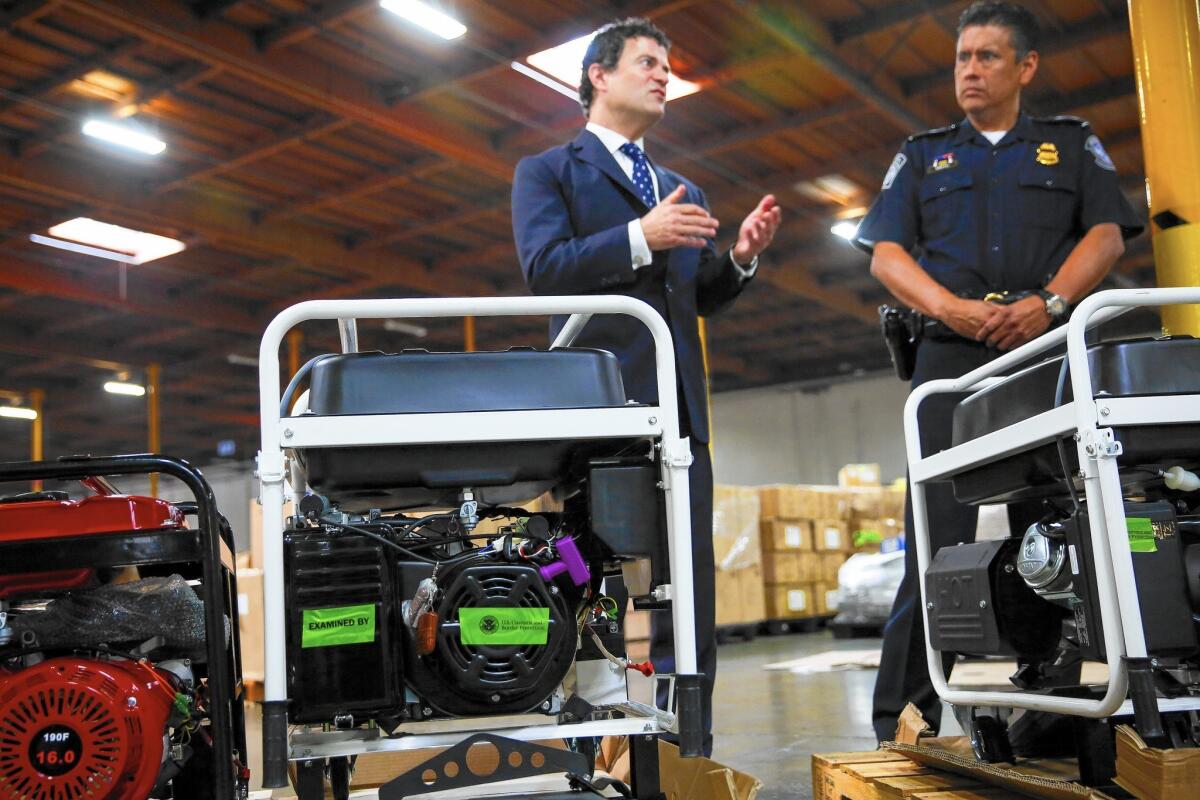U.S. officials to step up port inspections after illegal engines found

- Share via
Federal environmental and customs officials said Thursday they will step up inspections at the nation’s busiest port complex after discovering hundreds of imported vehicles, engines and other equipment that failed to comply with U.S. emissions standards.
From June to September 2014, U.S. Environmental Protection Agency inspectors and U.S. Customs and Border Protection officers examined 62 shipments at the ports of Los Angeles and Long Beach and found more than 730 foreign-made motorcycles, all-terrain vehicles, gas-powered generators and other equipment that lacked proper pollution controls required under the federal Clean Air Act.
EPA officials said the violations were prevalent enough that they will now hold monthly inspections at the ports.
“This is a big deal for L.A., because we need every single pound of pollution reduced that we can find,” said U.S. EPA Regional Administrator Jared Blumenfeld, who announced the results of the joint enforcement operation at a news conference in a sprawling customs warehouse in Carson.
Among the illegal items found were go-karts, outboard boat engines and miniature trucks. If not intercepted, the equipment would have been distributed and sold throughout the country, producing as much smog-forming nitrogen oxide emissions as about 1,500 cars, the EPA estimated.
The operation resulted in enforcement cases against eight companies that have agreed to pay a total of $57,000 in fines. The penalties were small — as little as a few thousand dollars per firm — because they were all first-time violators, authorities said.
Blumenfeld said some of the imported engines leaked fumes, while others had pollution controls that didn’t work. Even a small engine that was seized could release 20 to 30 times as much pollution as a typical car, he said.
All of the items were from Asia and most manufactured in China. Some of the engines and vehicles were sent back or seized, while others were retrofitted to meet U.S. emissions standards and then allowed on the market.
Customs officials said that only a small percentage of the shipping containers moving through the ports are opened and inspected.
Twitter: @tonybarboza
More to Read
Sign up for Essential California
The most important California stories and recommendations in your inbox every morning.
You may occasionally receive promotional content from the Los Angeles Times.














